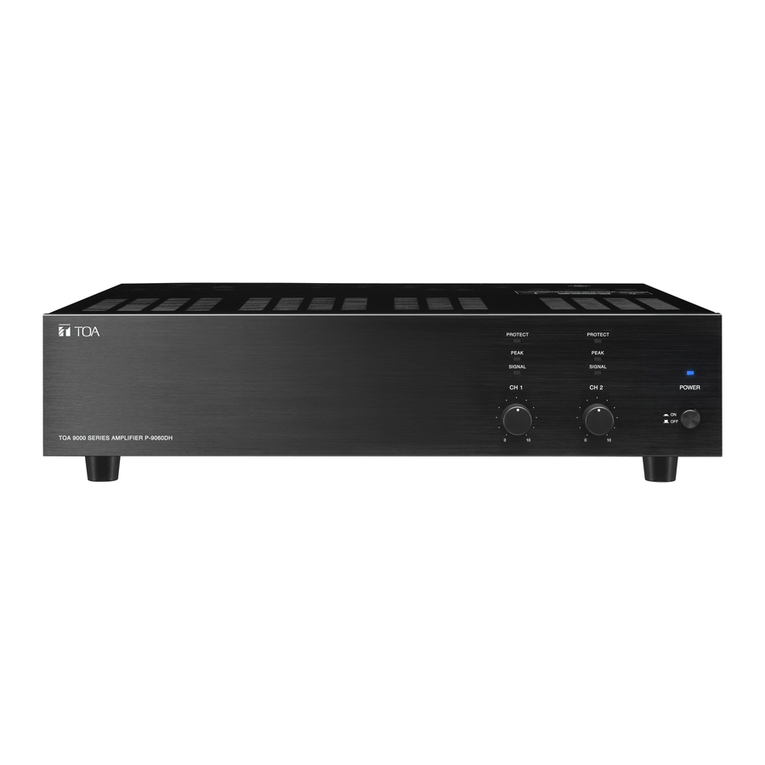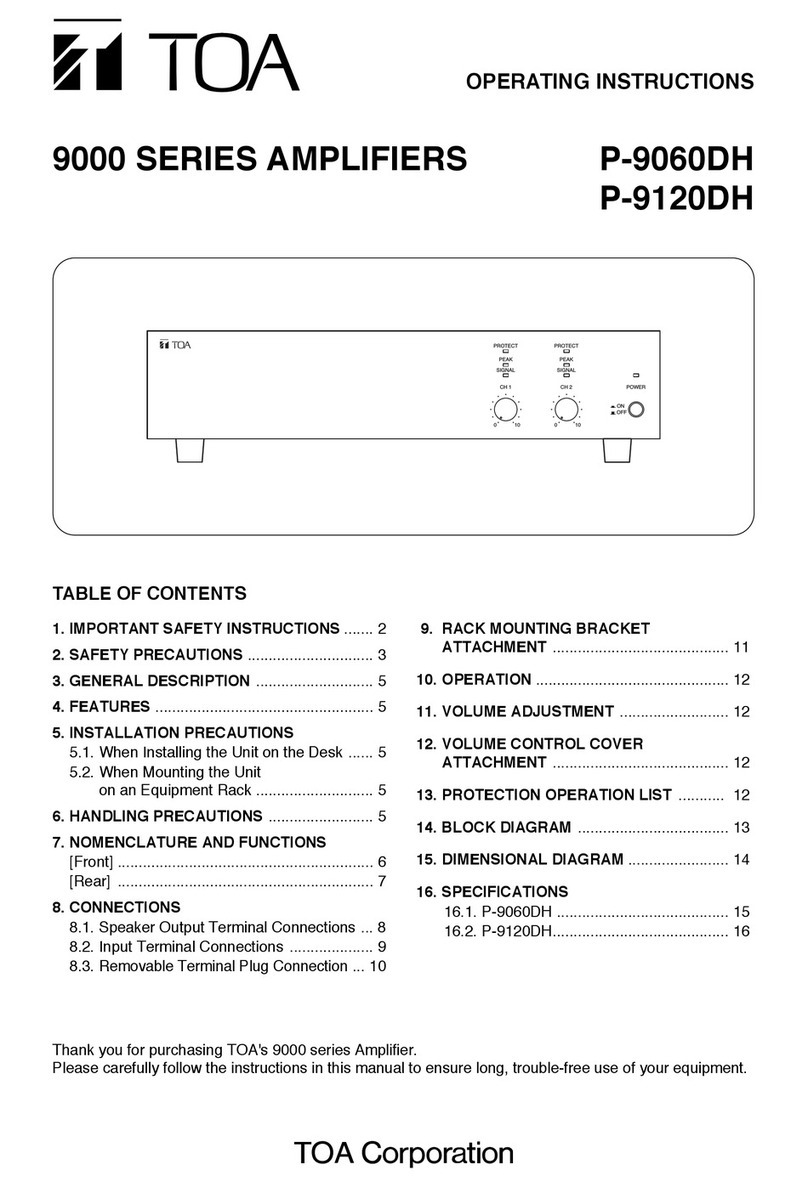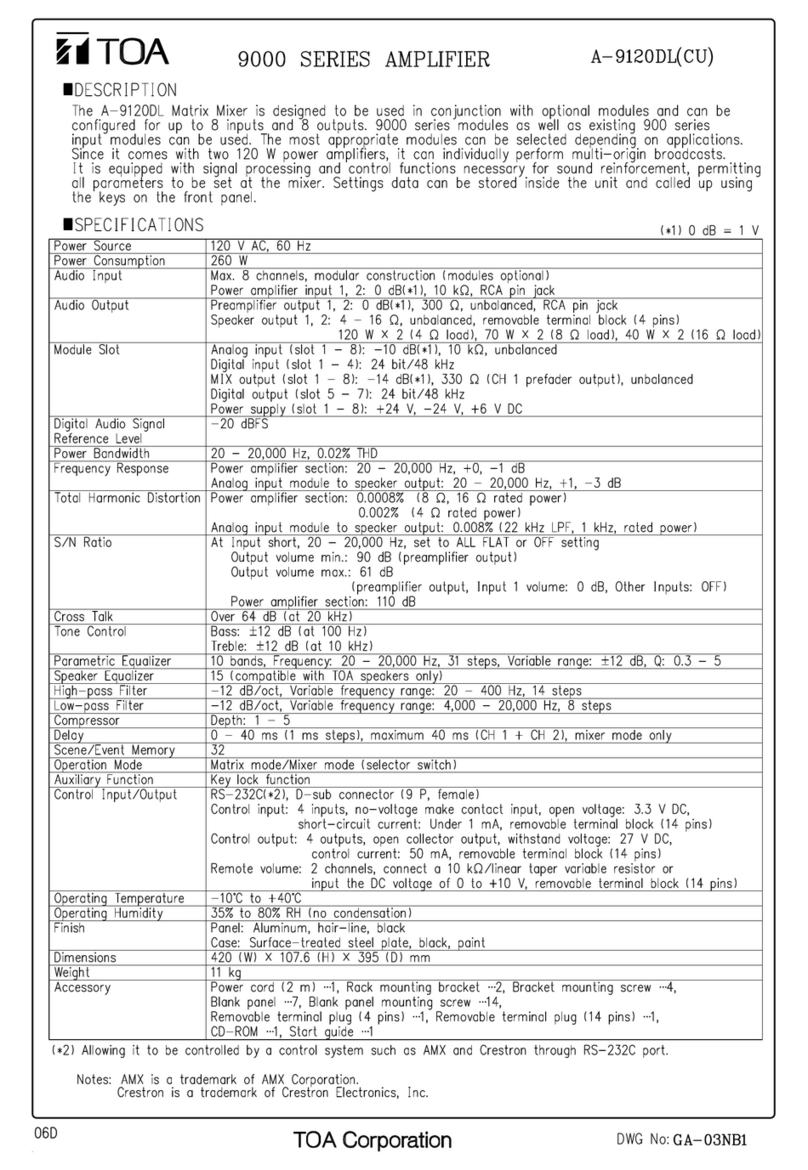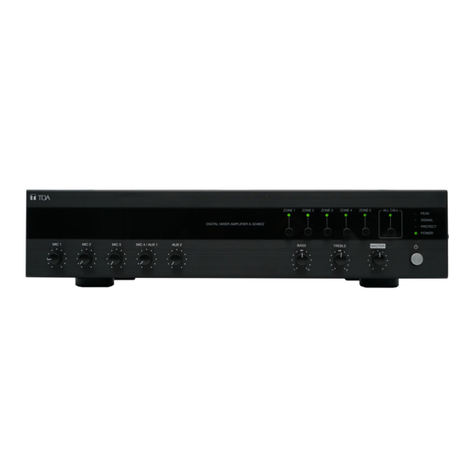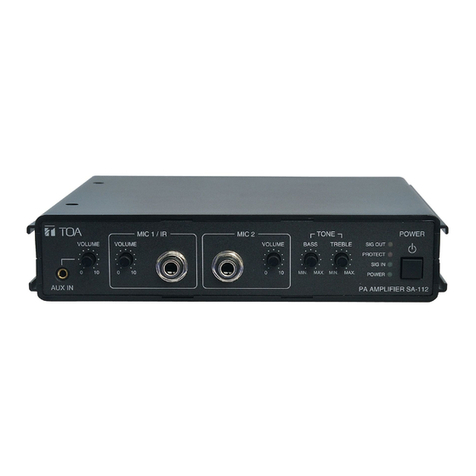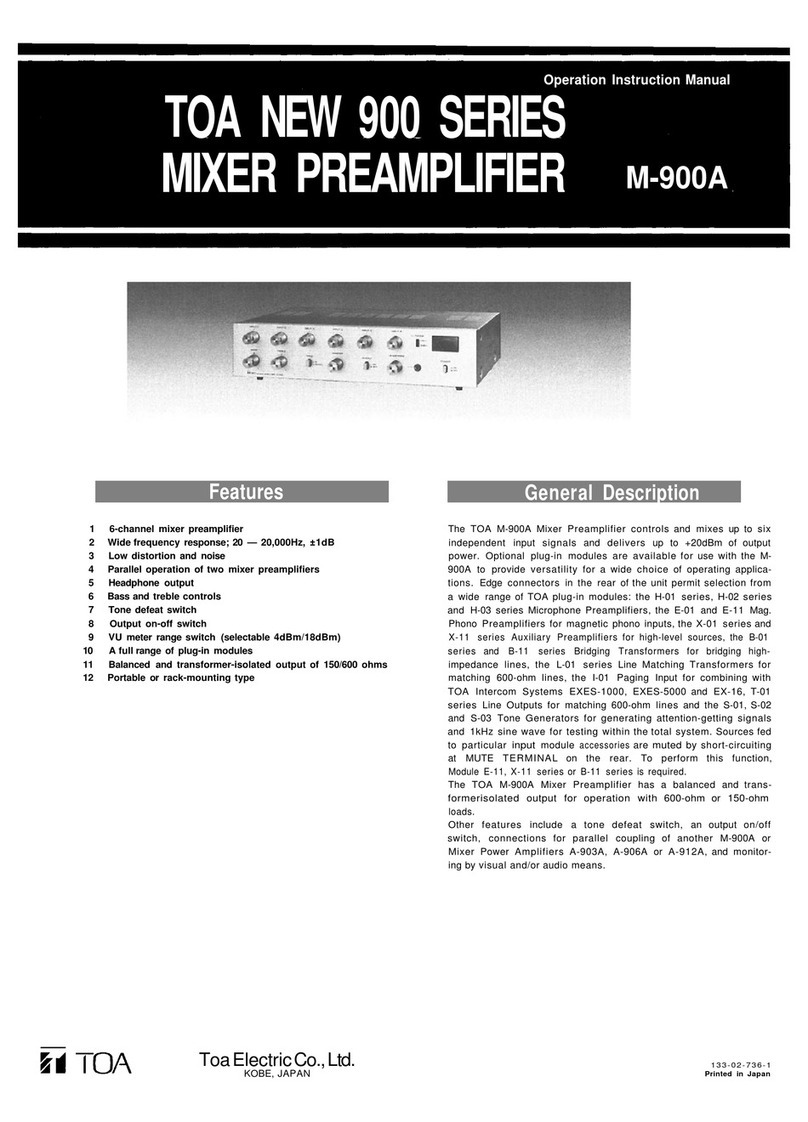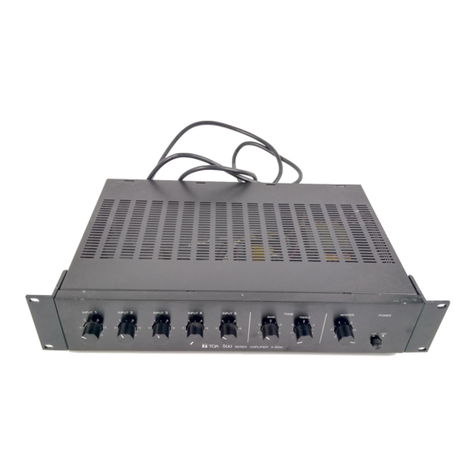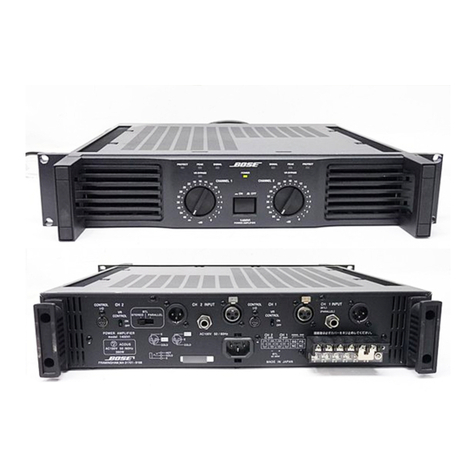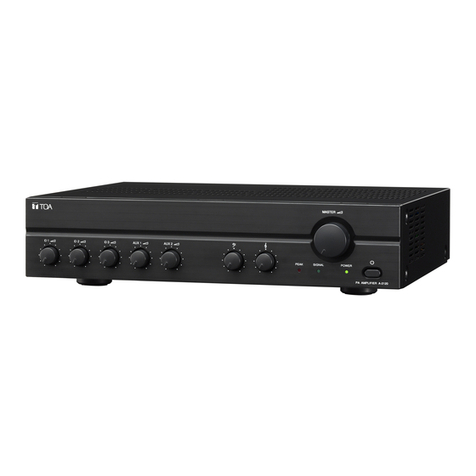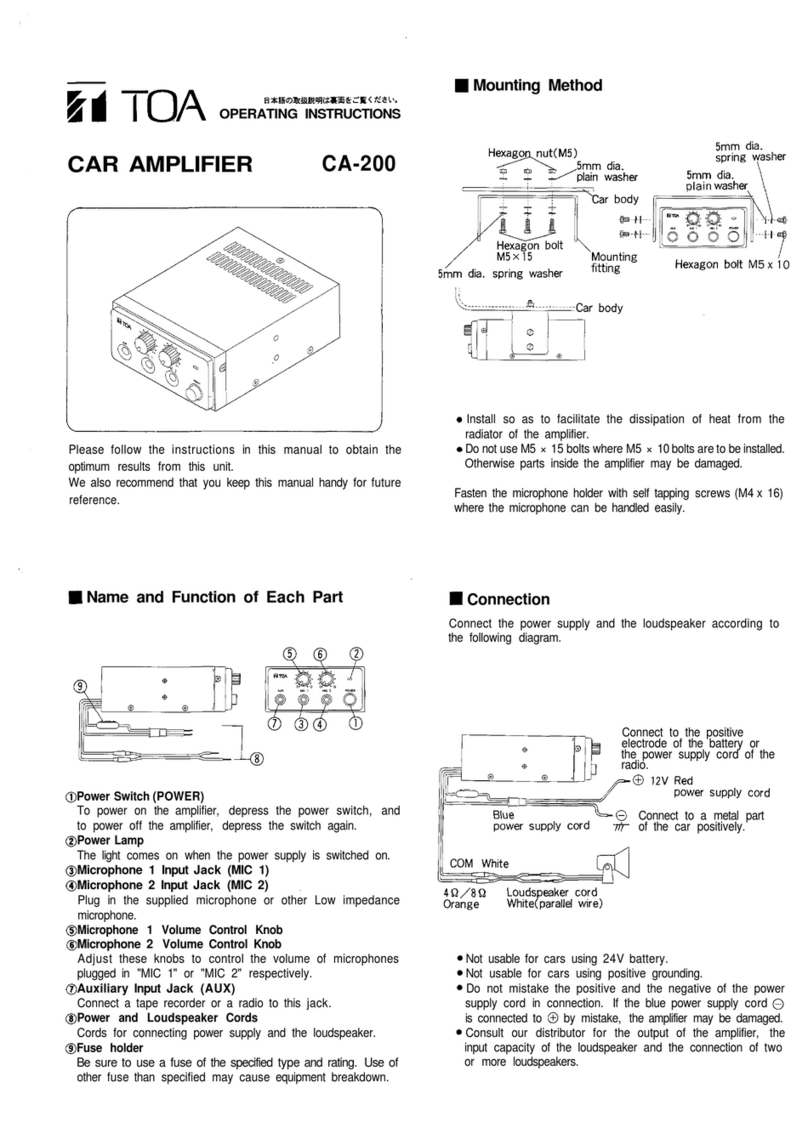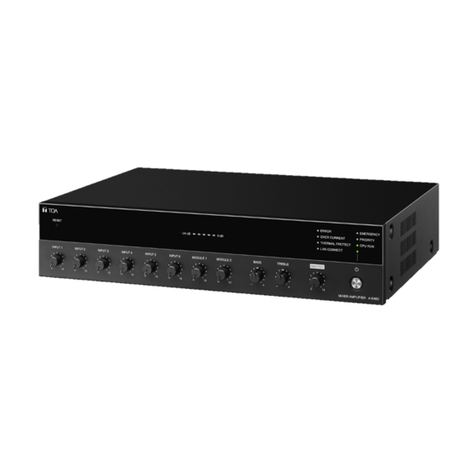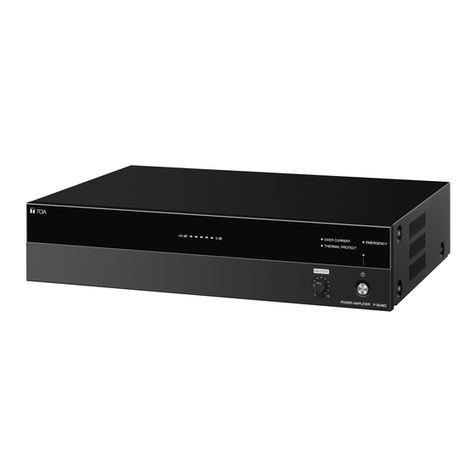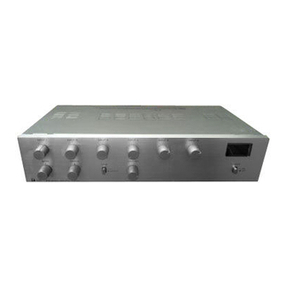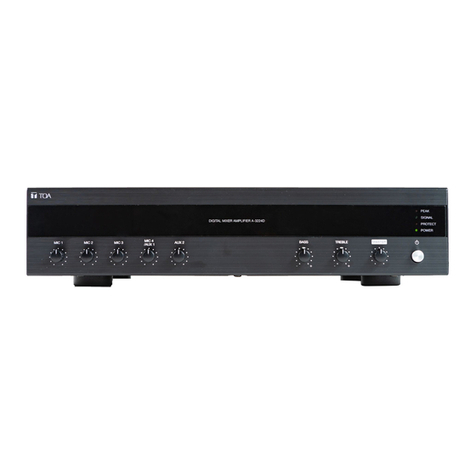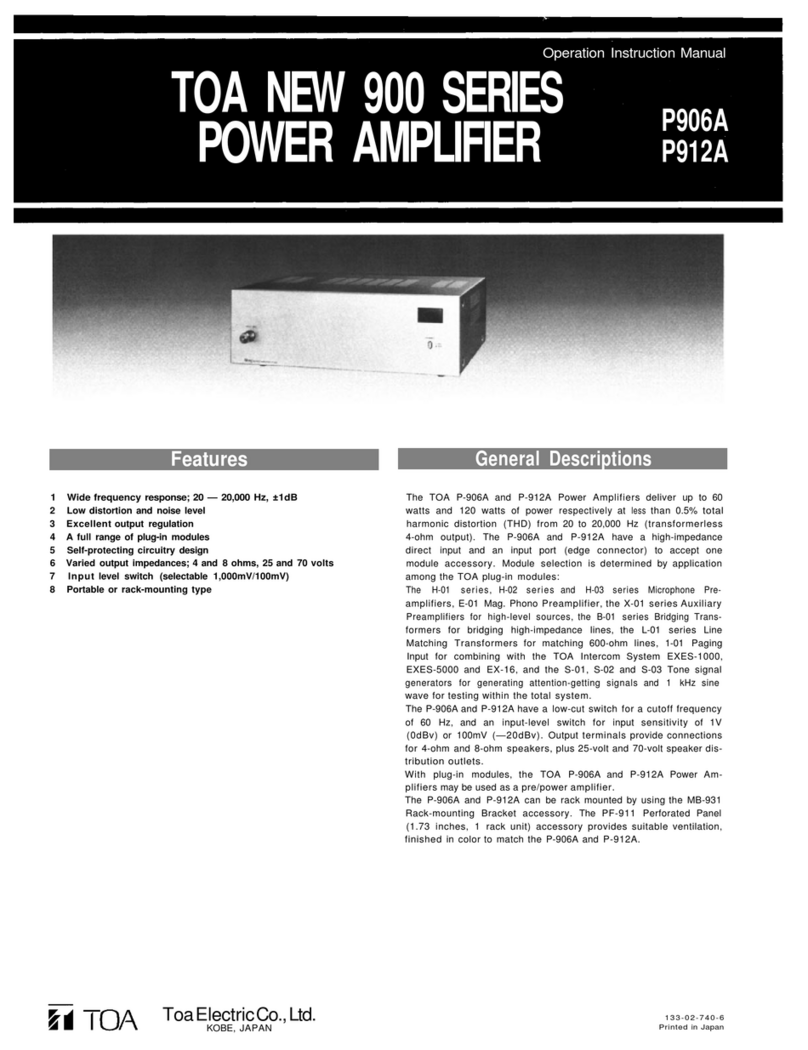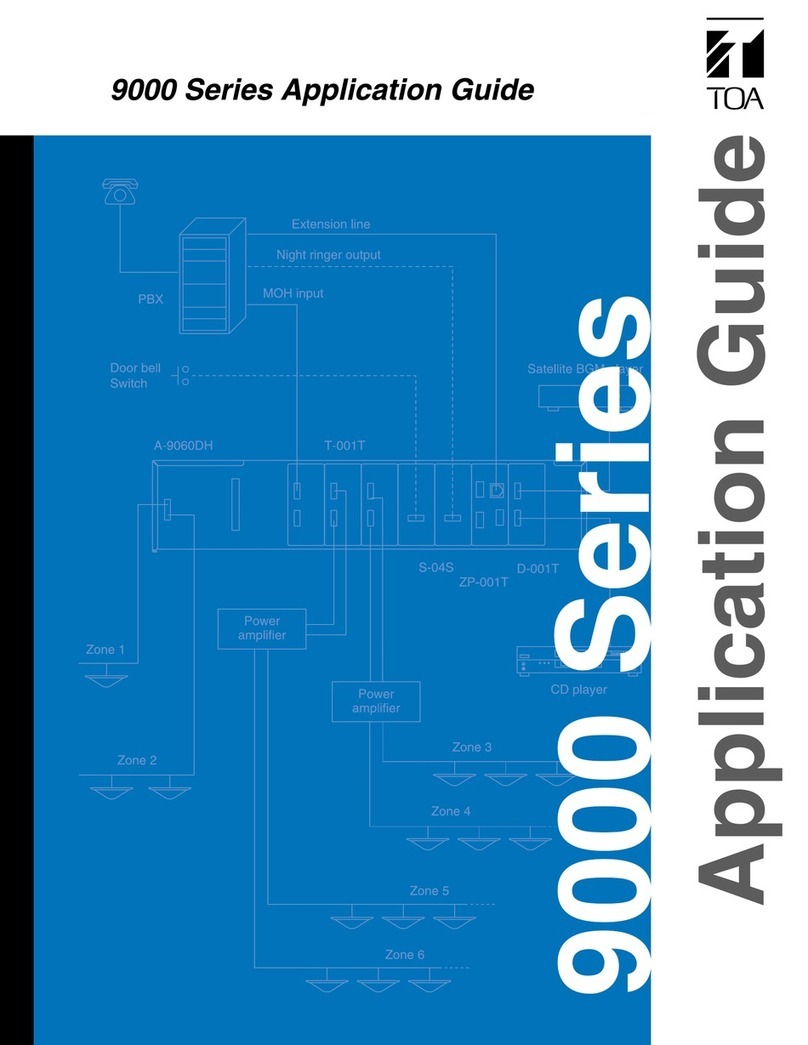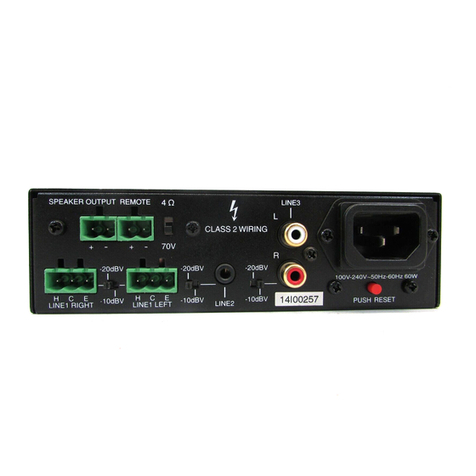
9
18. AC inlet
Connect the supplied power cord to this
receptacle.
Be sure to use the supplied power cord.
Using any other power cord may cause
electric shock.
WARNING
19. DIP switch
• Switches 1 and 2 (Chime tone setting switch)
Set the chime tone to be used.
(See "Chime Tone Setting" on p. 19.)
• Switch 3 (Line output interlock switch)
Sets an interlock between the zone selection
and the line output.
( See "Line Output Interlock Switch Setting" on
p. 19.)
• Switches 4 through 6
Not used.
20. Remote master volume control terminal
Short-circuit current: 10 mA or less, open voltage :
35 V DC or less, removable terminal block
(3.50 mm, 4 pins)
Sound volume can be adjusted by connecting the
10 kΩ B-taper potentiometer.
( See "Connecting to the Remote Master Volume
Control Terminal" on p. 15.)
21. Power remote control output terminal
Open collector output, withstand voltage: 30 V
DC or less, current: 25 mA or less, removable
terminal block (3.50 mm, 4 pins)
An output terminal that can be used for remote
control of other equipment. Operates in
synchronization with the unit’s power ON/OFF.
When the unit’s power is on, it is activated.
22. Emergency control output terminal
Open collector output, withstand voltage: 30 V
DC or less, current: 25 mA or less, removable
terminal block (3.50 mm, 4 pins)
An output terminal that can be used for remote
control of other equipment.
It is activated during the emergency broadcast
made from the unit.
23. Chime volume control knob
Adjusts the chime volume.
Rotate the knob clockwise to increase the chime
volume and counterclockwise to decrease it.
24. Ducker depth control knob
Adjusts the automatically attenuated level of the
sound volume on the BUS 2 while the broadcast
is being made using the BUS 1.
Rotate the knob clockwise to increase the
attenuation on the BUS 2 and counterclockwise
to decrease it. (See "DUCKER DEPTH
ADJUSTMENT" on p. 19.)
25. Input setting switches (Inputs 3 and 4)
Set whether or not to supply phantom power to
the microphones connected to Inputs 3 and 4 (26).
Tip
Phantom power is a 24 V DC.
26. Input terminals (Inputs 3 and 4)
–60 dB*, 600 Ω, electronically-balanced,
removable terminal block (3.81 mm, 3 pins)
Input terminals dedicated for microphones
27. Input setting switches (Inputs 1 and 2)
Set the input sensitivity level (LINE or MIC) of
the Inputs 1 and 2 (28). When switched to the
microphone input, set the phantom power to ON
or OFF.
Switch position Input specication at the
time of setting
MIC PHANTOM ON –60 dB*, 600 Ω,
phantom power ON
PHANTOM OFF –60 dB*, 600 Ω,
phantom power OFF
LINE –20 dB*, 600 Ω,
with no phantom power
Tip
Phantom power is a 24 V DC.
28. Input terminals (Inputs 1 and 2)
–20 dB* (LINE)/-60 dB* (MIC), 600 Ω, electronically-
balanced, removable terminal block (3.81 mm, 3
pins)
Input sensitivity can be switched either to the
Line input sensitivity or the Microphone input
sensitivity.
The input sensitivity can be changed with the
Input setting switch (27).
29. Control input terminals
(Control inputs 1 through 4)
Short-circuit current: 10 mA or less, open voltage:
35 V DC or less, Removable terminal block
(3.81 mm, 4 pins)
Input the control signals for controlling the priority
broadcast.
While the terminals are closed, the corresponding
trigger of the priority broadcast becomes input
state.
30. Functional ground terminal
Noise may be generated when external equipment
is connected to the unit. In this case, connect
this terminal to the functional ground terminal of
the external equipment, and the noise may be
reduced.
Note
This ground is not for protective ground.
* 0 dB = 1 V
